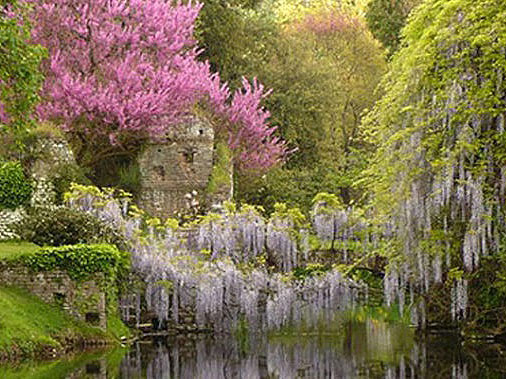
The region of Campania is one of great historical importance and spectacular natural beauty. From the gardens of Pompeii preserved by the eruption of Vesuvius, to the gardens built on the cliffs overlooking the Bay of Naples, the settings are truly unique in the World.
On the scenic Island of Ischia you will visit a private garden designed by the English landscape architect Russell Page alongside the owner of the property. They have created a garden which is also a botanical garden filled with exotic and unusual plants. In the city of Naples you will visit cloister gardens which were originally designed in 1320 and redesigned in the 1700’s. The cloister contains beautifully laid out gardens and pillars and benches covered in the typical ceramic tile which the area is so famous for. In Naples you will also visit the Botanic gardens with its large inventory of exotic plants, including a large selection of tree ferns and many beautiful greenhouses. Then on to the gardens of Pompei which have come to light after extensive excavations. The porticoes, pergolas and fountains were all elements incorporated into the designs used in the Renaissance style when the classic Greek and Roman tradition was revived. Many of the plants roots have been preserved making it possible to reconstruct not only the architecture but the vegetation of these ancient gardens. Along the magnificent road which leads from the town of Amalfi towards Salerno we find two gardens. First, a site famous for being the most magnificent and extensive English style garden in Southern Italy. Where both Vita Sackville-West and Gertrude Jekyll contributed to the garden’s design. The next stop on your itinerary is to one of the oldest existing Palaces in Italy where Boccaccio visited and later wrote of it in his work Il Decamerone. It’s position overlooking the Bay of Naples is one which alone is worth the trip. Finally, a trip to Capri to visit the Villa and gardens which are today owned by a museum foundation. The gardens, home to a great variety of Mediterranean plants and a charming little mediaeval chapel, are as note-worthy as any of the exhibits inside the museum.

